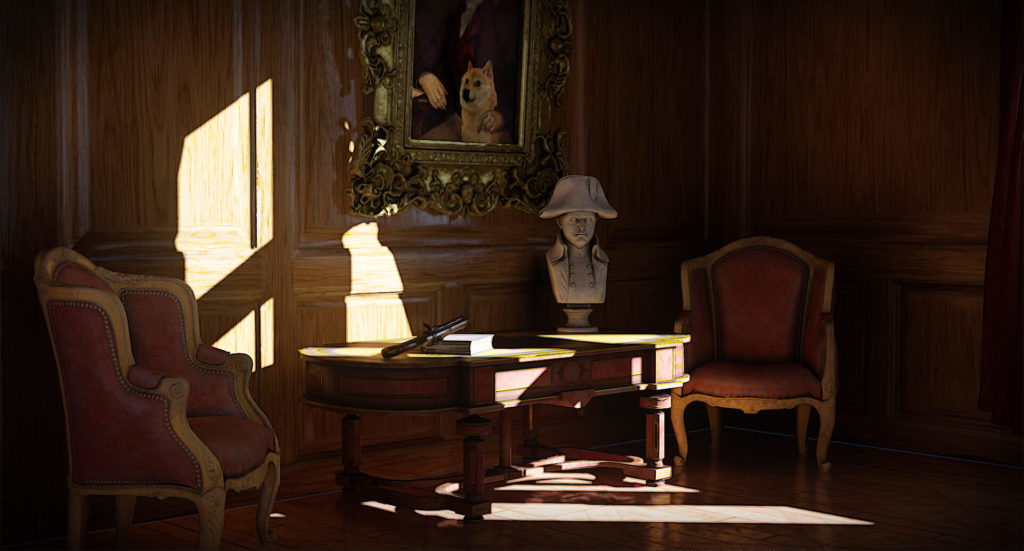- 22 September 2020
- Benny Har-Even
If you’ve even got one eye on the graphics market you can’t help but have noticed that there’s a considerable buzz around ray tracing – a new paradigm for rendering light in a 3D scene that offers benefits for both gamers and developers. For gamers, it promises much greater realism and immersion by using light in a much more natural-looking way and is a key step towards creating truly photorealistic games, while for developers it offers a simpler and more efficient way of creating lighting. This is because effects such as reflections and shadows, which are challenging to simulate using traditional rasterisation, appear naturally as a result of the ray tracing algorithm.
Of course, while we refer to ray tracing as new, as a concept for 3D graphics it dates back to 1968, with further developments along the way, but due to the computational complexity required it only became practical to implement in real-time relatively recently. Second-generation ray tracing-capable graphics cards for Windows-based desktop PCs have just launched, promising 4K visuals with ray-traced effects for the first time, while the next-generation gaming consoles arriving in the market by the end of the year are also promising ray tracing capabilities. Ray tracing is causing such a buzz that even current generation consoles are getting in on the act, with the classic PC title Crysis being remastered with ray traced effects that will run even on older graphics cards and current generation consoles that do not have ray tracing specific hardware support.
With all this going on, many do not appreciate that not all hardware marketed as ray tracing enabled is created equal. Imagination Technologies has been leading in the ray tracing space for several years and had a development board with working hardware in 2016 that was more sophisticated than the solutions in the market today.
To help the industry understand the differences between the various solutions on offer, we have created the Ray Tracing Levels System – ranging from Level 0 through to Level 5. This consists of:
- Level 0 – Legacy Solutions
- Level 1 – Software on Traditional GPUs
- Level 2 – Ray/Box and Ray/Tri Testers in Hardware
- Level 3 – Bounding Volume Hierarchy (BVH) Processing in Hardware
- Level 4 – BVH Processing with Coherency Sorting in Hardware
- Level 5 – Coherent BVH Processing with Scene Hierarchy Generator in Hardware
The key point that comes across when reading the detail is that as we move up each level there is an increased focus on efficiency. The market however does not always move based on efficiency. For example, the recently released second-generation ray tracing-capable desktop PC hardware has increased performance by simply providing more ray tracing processing – which naturally requires more silicon area and more power. However, this brute force approach is not a viable option for solutions that need to operate within a power budget, such as mobile.
 Images such as these, featuring realistic, dynamic shadows, at 60fps, will be possible in real-time on Level 4 ray tracing hardware
Images such as these, featuring realistic, dynamic shadows, at 60fps, will be possible in real-time on Level 4 ray tracing hardware
On console, we can also see that ray tracing effects will only be used sparingly as the hardware does not have the efficiency required for many complex effects. For example, in a demo sequence from one launch title, we can see an object casting ray traced reflections on the floor. However, as soon as that object is destroyed the reflections disappear in an instant. This is because it is not possible to update the scene geometry fast enough, as this would require a scene hierarchy generator in hardware – which we describe as a Level 5 solution. Equally, some early titles we can see show evidence of single bounce reflections and low-resolution reflections, as without a coherency gathering solution (as per our Level 4 solution), these effects are again too computationally expensive or execute with poor efficiency.
Gaining an understanding of ray tracing architecture is essential to put the ever-increasing marketing performance metrics for ray tracing into context. Claims for GigaRays per second may initially impress but will pale in reality due to low efficiency, linked to low utilisation of GPU processing resources or due to memory access limitations due to the non-coherent memory access patterns. How our hardware architecture helps tackle these complex issues is explained in this white paper, so do check it out to learn more.
Once the ray tracing levels are understood, we can look forward to SoC designers enabling this game-changing technology to move from low efficiency, high-power consumption hardware into area and power-efficient devices, so mobile gamers will be able to enjoy the benefits of incredibly lifelike, photorealistic games for even greater levels of immersion.






